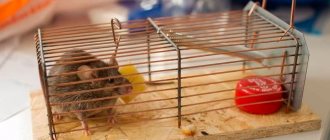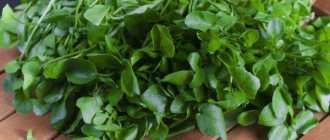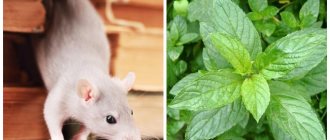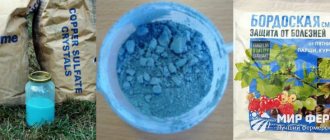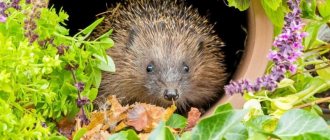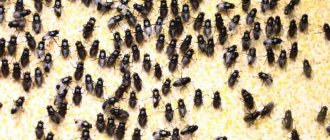What does black root look like and where does it grow?
Medicinal blackroot (Cynoglossum officinale) is a biennial herbaceous plant from the Borage family. Reaches a height of 1 m, has a dark dense tap root and several straight stems with branches in the upper part. The lanceolate leaves are heavily pubescent, especially below. The basal ones have long petioles, and the upper ones sit on the shoot.
Blackroot officinalis is also found under the names mousegon and ratheron.
In May and June, the plant bears small buds in paniculate inflorescences with funnel-shaped corollas of dirty red or bluish-red color. In August and September, the fruits of the medicinal blackroot ripen - egg-shaped nuts covered with thorns.
Important! The medicinal plant is classified as poisonous and has an unpleasant odor.
Where does blackroot grow in Russia?
The medicinal plant can be found throughout Russia. Blackroot is widespread in the European part and the Caucasus, Siberia and the regions of Central Asia. Selects for growth mainly river cliffs and roadsides, fields and dry slopes, wastelands and pebbles.
Growing by seeds and transplanting
Yakutka grows in the wild, but if you wish, you can grow it in the yard. There are two options for this:
- seed method;
- complete plant replantation.
When propagating by seeds, you need to wait until they are fully ripe.
The seeds are carefully collected, after which they need to be placed in separate containers. This should be done in autumn or spring, and the seedlings will have to be deepened 2-3 cm into the ground. After the seedlings have emerged, the seedlings can be moved to a permanent site in open soil. During the dry season, young grass needs constant watering. After she gets stronger, care can be stopped. Subsequent reproduction of the Yakut does not require human participation and will be carried out through self-seeding .
Of course, it is easier and faster to replant an already strong plant than to germinate seeds. To do this, you need to find grass that is not older than 1 year. The blackroot needs to be dug up along with the soil clod and the roots and leaf rosette must be carefully cut off. To speed up the plant’s adaptation to a new place, you need to add the drug Kornevin and 20 g of ammonium nitrate to the soil. Once the plant is rooted, you will no longer have to care for it.
Chemical composition
Photos of blackroot and a description of where it grows are of interest in folk medicine due to the chemical composition of the herb. Flowers, seeds, leaves and roots contain:
- tannins;
- bitterness and resin;
- essential oils;
- inulin;
- alkaloids and glycosides;
- fixed oils;
- consolidine and choline;
- fumaric acid;
- cyloglossin.
Uncontrolled use of biennials poses a great danger; you can be seriously poisoned by them. But in accordance with the recipes, using a medicinal plant is very useful.
Diseases and pests
The chemical composition of black root gives a positive effect not only for others, but also for the culture itself. The aroma, which thins the plant, repels pests and insects. Therefore, the plant is not attacked by pests. The plant is quite stable and unpretentious in cultivation. In addition, the plant itself is used to repel pests - rodents.
Blackroot is rarely susceptible to various diseases. The only thing the culture is afraid of is stagnation of water in the roots. In this case, the bush quickly withers and the rhizome rots. Having eliminated the problem, the culture grows rapidly.
You might be interested in: Quince
Properties of black root
Traditional medicine uses medicinal black root in the treatment of numerous ailments. The plant improves the condition of the body, namely:
- promotes expectoration when coughing and speeds up recovery from colds;
- relieves inflammation;
- helps in the treatment of skin diseases - dermatitis and eczema;
- helps relieve muscle cramps;
- reduces pain from gout, arthritis and rheumatism;
- regulates digestion and accelerates metabolic processes;
- strengthens the body's immune resistance;
- improves the condition of bones and ligaments;
- has a beneficial effect on the skin and slows down the aging process;
- strengthens hair and nails;
- promotes healing of wounds, cuts and burns.
The properties of the medicinal plant are used for the prevention of oncology and in the complex treatment of cancer.
The fixative properties of medicinal black root are used for diarrhea
Methods of preparation and use
Traditional medicine offers several medicines based on useful plants. Some of them can only be used externally, others are suitable for internal use.
Tincture
An alcoholic tincture of a beneficial plant is beneficial for arthritis, rheumatism and gout. It is used for compresses and lotions, and added to medicinal baths.
The recipe for the remedy looks like this:
- 5 g of dried root is poured into a glass of good vodka;
- Boil the mixture under the lid over medium heat for 15 minutes;
- leave to infuse for another 12 hours;
- passed through a layer of gauze.
The plant tincture is used mainly externally.
You can use black root tincture to disinfect damage
Infusion
An aqueous infusion of medicinal black root is beneficial for coughs and colds, as well as a tendency to cramps. The remedy is prepared as follows:
- grind the dry root of the plant in a volume of 5 g;
- pour 1 liter of hot water into the raw material;
- keep covered for two hours;
- passed through folded gauze.
You can take the infusion three times a day, 5 ml. The product promotes expectoration, relieves fever and has a relaxing effect.
Treatment with black root infusion is continued for a week.
Decoction
A decoction of medicinal black root is prepared from the leaves of the plant and is most often used for joint pain, sprains and fractures. The healing remedy is done like this:
- grind dry leaves in the amount of five small spoons;
- pour 1 liter of liquid;
- heat in a water bath for half an hour;
- remove from the stove and filter.
The finished product is used for compresses and lotions. The decoction accelerates tissue restoration and has an analgesic effect. It should be used no longer than seven days.
We recommend reading: Tea with thyme: beneficial properties and contraindications
A decoction of medicinal black root can be added to relaxing baths.
Juice
For cold coughs and cramps, fresh black root juice has a good effect. The drug for home use is made as follows:
- crush the leaves and stems to a paste;
- the processed raw materials are squeezed through cheesecloth until pure juice is obtained;
- dilute the product with water in a ratio of 1:30.
You need to drink the juice three times a day, a small spoon on an empty stomach.
To avoid overdose, treatment with black root juice is carried out for no more than a week.
Ointment
For joint ailments, severe bruises and trophic ulcers, you can prepare an ointment from medicinal black root at home. The recipe looks like this:
- the dried root is crushed in the volume of a large spoon;
- mixed with an equal amount of comfrey;
- add 100 melted pork fat to the ingredients;
- mix thoroughly.
The finished ointment is rubbed into sore spots and lesions on the skin. If desired, the treated area can be covered with a compress.
Ointment with medicinal black root brings more benefits when heated
Bath
When treating fractures, as well as bruises, sprains and inflammation of the joints, you can take baths with the addition of black root decoction. The medicine is prepared as follows:
- mix 100 g of crushed roots and leaves of the plant;
- pour the collection with a large amount of hot water in a large basin or enamel bucket;
- bring to a boil and boil for 15 minutes over low heat;
- remove from the stove and leave for an hour.
The finished broth is filtered and added to the filled bath. For 10 liters of water, 200 g of medicinal raw materials are consumed. If the liquid is taken in a larger volume, then the amount of black root for the decoction is proportionally increased.
Take a bath with medicinal black root for about 15 minutes.
Care
Despite the fact that black root is not decorative, growing the flower is used for medicinal and economic purposes. However, to obtain flowers, the plant requires careful care and compliance with planting rules. In addition, proper care of hybrid representatives helps to grow a decorative bush that decorates the place in the garden bed.
Growing indoor varieties of blackroot occurs from seeds. Sowing is carried out in early spring, in containers filled with nutrient substrate. After permanent foliage appears, the seedlings are sown in their permanent habitat. Despite the fact that cynoglossum is winter-hardy, sowing hybrid seeds in open ground often does not give positive results.
The plants are quite unpretentious to grow and do not require much effort or care from a person. The culture easily adapts to high heat or frost, equally blooming with lush inflorescences. However, for good flowering, blackroot must be planted in bright areas with properly selected soil and a slightly acidic environment. It is also worth observing the rules for the proximity of the shrub to other plants, because blackroot is poisonous and should be planted away from food products and places where children play.
Illumination
In its natural environment, blackroot grows in well-lit areas. Most of the time the crop is in direct sunlight. Therefore, when growing night blindness in the garden, you should choose a bright place in advance. Shading is also suitable for shrubs, but in this case, the plant will not bloom so profusely, but the shrub will gain growth.
Constant stay in the shade is dangerous for cynoglossum. A shrub that has not received enough solar energy quickly fades and loses its decorative and beneficial properties. With a long stay in the shade, the shrub stretches its shoots, and the foliage seems withered and drooping.
Temperature
Sudden temperature changes are not dangerous for blackroot. The shrub tolerates heat and coolness equally well. Drafts are not dangerous for the crop either. However, strong winds can bend and break grown crops. Therefore, in the garden, grown bushes are tied to a support.
Air humidity
For cynoglossum, the amount of moisture in the air is not important. The plant is unpretentious and can remain in arid environments for a long time. However, with prolonged drought, the growth of the bush slows down. Therefore, when grown in garden conditions, the crop is irrigated as needed.
Watering
Blackroot does not tolerate stagnation of water in the soil. Dry soil is more favorable for crops than wet soil. Therefore, when planting, it is important to create a drainage layer at the bottom of the planting hole. Blackroot must be watered as needed. The average frequency of watering the crop is once a week. It is worth doubling watering when the inflorescences begin to form. Thus, flowering will last longer, and the number of buds will increase several times.
Perennial representatives overwinter in the ground. Therefore, by the time the fruits ripen, it is worth taking care to prepare the plant for wintering. To do this, after the fruits ripen, watering is gradually stopped. In the spring, after heat has formed, watering is resumed.
You might be interested in: Gledicia
Fertilizer
Blackroot extracts nutrients from the soil. Therefore, annual cynoglossum varieties do not require additional fertilizing and soil fertilization. However, the constant presence of perennial inflorescences in one place leads to soil depletion. Therefore, when growing perennials, it is worth taking care of a sufficient amount of nutrients in the soil.
Fertilizers for perennials are applied every two years. Organic fertilizers and mineral complexes are suitable as top dressing. Fertilizer is applied at the root of the plant in liquid form, being careful not to get on the leaves and flowers.
soil mixture
To plant blackroot in pots or as garden plants, you should choose nutritious soil with a high content of drainage and organic matter. The soil at the planting site must contain a slightly acidic environment. If the spruce soil contains a large amount of alkali, it is worth diluting it with limestone.
For indoor plants, you can purchase a special store-bought substrate. However, experienced gardeners prefer to make their own soil mixture for planting bushes. To do this, equal parts of peat and sand are mixed, a small amount of organic matter and mineral fertilizers are added. In addition, turf and garden soil, as well as humus, are added to the mixture. This composition has the optimal amount of components for the active growth of black root.
Transfer
Biennial and annual representatives of blackroot are not subject to transplantation. As a rule, only perennial crops are replanted to spread or enrich the soil with new bushes. To do this, the cynoglossum is carefully dug out of the ground. Since blackroot is poisonous, you must wear gloves. During transplantation, it is necessary to prepare a hole for the bush in advance.
The plant is carefully transplanted from one place to another, trying not to touch the rhizome. After transplantation, the crop is watered. With normal nutrient content, blackroot quickly takes root in a new location.
Bloom
Blackroot blooms in summer. Some varieties bloom in late summer, but most bloom already in May. During flowering, multi-colored paniculate inflorescences are formed on long stalks. Depending on the variety, the shrubs may bloom with white, purple, pink or lilac cups.
The flowers are small in size, but the combination of several buds collected in one brush gives the crop an unusual appearance. The panicles rise above the bushes, hanging down.
Trimming
Blackroot may not be pruned. The plant does not grow profusely and maintains its shape on its own. In addition, most of the foliage is located at the top, so the crop looks like a neat bush.
The plant reproduces by seed. To prevent the growth and formation of wild bushes, after the formation of fruits, they are plucked or pruned. In spring, perennial bushes get rid of the remains of dry grass.
Use in folk medicine
Medicinal black root can cause severe poisoning and requires careful handling. Despite this, traditional medicine offers quite a few options for using the plant for diseases.
To normalize bile secretion
For diseases of the liver and biliary tract, it is recommended to take an infusion of medicinal herbs. The recipe looks like this:
- a small spoon of medicinal blackroot leaves is poured with 250 ml of boiling water;
- cover the container with a lid;
- keep for an hour in a warm place and filter.
The finished infusion is taken four times a day, the dosage is only 1/2 a small spoon.
For oncology
The medicinal plant contains antioxidants and can slow down the development of cancer. In complex therapy, the following decoction is used:
- mix dry leaves of the plant and crushed rhizomes;
- pour 5 g of raw material with a glass of fresh boiling water;
- leave covered for 20 minutes;
- filter through cheesecloth.
You need to drink the decoction 15 drops three times a day.
Attention! For cancer, treatment with black root is carried out only in consultation with a doctor and in combination with official medications.
For convulsions
An alcohol tincture of medicinal black root has good anticonvulsant properties. It is prepared as follows:
- grind 10 g of dry raw materials;
- pour a glass of good vodka or alcohol diluted to 40 ° C;
- leave for two weeks in a dark place, periodically removing to shake;
- After the expiration date, strain.
The medicinal tincture is consumed 5 drops three times a day.
Before use, it is recommended to dilute the black root tincture with a small amount of water.
For rheumatism
For joint pain, a tincture of a beneficial plant in dry wine has a good effect. Traditional medicine offers the following recipe:
- 20 g of crushed dry raw materials are poured with 500 ml of red wine;
- put away in a closed container for five days to infuse;
- After the period has passed, the drug is passed through gauze.
You need to drink the product in small quantities, 15 drops up to four times a day. The tincture has good analgesic properties and relieves inflammation.
For diarrhea
Medicinal black root is beneficial for indigestion. For medicinal purposes, a water infusion is prepared:
- a small spoonful of roots and dry grass, as well as medicinal blackroot seeds, is poured into a glass of boiling water;
- Infuse the mixture, covered, until completely cooled;
- filter through cheesecloth to remove sediment.
The infusion should be consumed three times a day on an empty stomach, a single dosage is 30 drops. The drug has good fixing properties, but it is recommended to use it only when absolutely necessary.
For burns, bites and cuts
The medicinal root promotes rapid healing of the skin, has an anti-inflammatory effect and relieves pain and itching. To treat bites and wounds, make the following remedy:
- four large spoons of crushed root are brewed with 1 liter of hot water;
- Bring the mixture to a boil on the stove and simmer for another 15 minutes;
- keep covered for 12 hours and filter.
The product should be used for lotions and compresses. Black root prevents infections from developing and restores tissue integrity.
Benefits of the plant
Black root has many beneficial properties, but this herb is often used to treat cramps, coughs, and also as an emollient and analgesic for snake bites, burns and furunculosis.
Black root is also useful in the fight against rodent pests, as it helps repel them. Moles, rats and mice really do not like the aroma of Yakut grass, and if parts of it are placed in places where parasites accumulate, they will soon leave the area. At the dacha, you can fight weeds with the help of black root. For this purpose, you need to scatter it under the trees or treat the soil near them with a tincture based on this herb.
The blackroot plant is also grown by beekeepers, as it is a good honey plant. It allows you to improve the quality of honey collection and protect the bee home from mice and rats.
Contraindications
The medicinal black root plant contains many toxic substances. It is recommended to use it externally, and for internal use, the dosage should be carefully observed.
It is necessary to completely abandon the use of the plant:
- during pregnancy;
- in the presence of individual allergies;
- during lactation;
- with exacerbation of gastrointestinal ailments;
- for serious chronic heart diseases;
- with liver failure.
Products based on medicinal black root should not be offered to children under 12 years of age. In adolescence, the use of herbal raw materials must be agreed with a doctor.
Danger to people and pets
Black root, although a medicinal plant, is quite poisonous. With prolonged contact, it becomes dangerous for any living creature. Therefore, when harvesting the stems, roots or seeds of a plant, it is necessary to use protective gloves, and after completing the work, wash your hands thoroughly with soap.
It is necessary to protect from exposure to the rat racer and domestic animals. In those places where hay is harvested or livestock is grazed, it is imperative to destroy this weed - if a lot of blackroot gets into the feed, the livestock may die.
Important! Under no circumstances should pets or children be allowed to come into contact with the grass.
Collection and preparation of black root medicinal
Medicinal blackroot herb is harvested in late spring and early summer, during the flowering period. The healing underground part is dug out in mid-autumn, after the stems and leaves have completely withered. The collection is carried out in an ecologically clean area, away from roads, landfills and industrial facilities.
The prepared raw materials are laid out to dry in the shade in the fresh air or in a warm room with good ventilation. Direct rays of the sun should not fall on the medicinal herb. Since the plant is classified as poisonous, work with it using gloves, and then, just in case, wash your hands thoroughly.
Medicinal black root should be stored in dry glass jars or fabric bags. The raw materials are placed in a dark, cool place with low humidity. Periodically turn the workpieces so that mold does not grow in them.
Black root retains its valuable properties for a year
Important! Toxic medicinal raw materials must be stored in a place where children cannot reach them, and away from edible spices and seasonings.
Botanical description
Blackroot is a perennial plant, less often a biennial plant, which is an erect herb up to a meter high. Botanical characteristics determine other names of the herb - night blindness, cynoglossum, cat soap or burdock. Despite the unpleasant smell, there are ornamental plant varieties that decorate gardens and are used in folk medicine. The perennial belongs to the weeds of the Borachnikov family.
The rhizome of blackroot is taprooted, quite strong and thick. Small adventitious roots extend from the main root, which reaches a thickness of 25 mm. Blackroot got its name from the color of the rhizome - it is black. The roots grow straight into the ground. Thus, the cynoglossum receives enough nutrients from the soil and grows quickly.
An erect stem extends from the base of the rhizome. The shoots are dense, light green in color. The length of the stems reaches a meter. Closer to the middle, the stem produces shoots that are covered with leaves. One plant usually contains a small number of stems - 2 or 3. However, a large number of shoots on top gives the bush lushness.
Alternate, bright green leaves are formed on the shoots and stem. The leaf blade is lanceolate, elongated; the leaves are attached to the stem by the base of the leaf blade, without a petiole. The surface of the leaf blade is covered with small white hairs. In the middle of the leaf blade there is a noticeable central vein, which gives the leaves a concave shape. The basal leaves are elongated, have a pointed end and a small petiole with which they are attached to the stem; the length of the leaf plate at the bottom of the plant can exceed 10 cm, and the length of the apical stems does not exceed 5 cm. The leaves are wide, up to 5 cm in the center. The basal leaves die off with the onset of flowering.
Blackroot blooms in early summer. The flowers are small inflorescences, up to 7 mm in diameter, collected in small panicles. Flowering is apical, inflorescences are located on long stalks. The inflorescences are funnel-shaped, located in green bracts. Depending on the variety, cynoglossum may bloom with red, purple or blue inflorescences. Blackroot blooms for a long time, lasting all summer. At the beginning of flowering, the panicles are small, but by the end of summer the inflorescences gain size and lengthen.
After flowering, fruits—pods with seeds—appear at the site where the buds form. The boxes are small nuts covered with hooks. The nuts are filled with small black seeds. The fruits ripen at the beginning of autumn, after which they fall into the ground and germinate.
Blackroot and all its parts have a distinctly unpleasant odor that repels insects. Therefore, shrubs are often planted in places where it is necessary to eliminate flies and pests. All parts of the grass are poisonous and dangerous to humans.
The use of black root against mice
The properties of black root are used not only in folk medicine, but also in agriculture. A plant with toxic components in its composition and an unpleasant odor helps to cope with the invasion of rodents in the country. Black root is used in several ways:
- lay out the stems and underground parts of the plant in the basement, cellar or barn;
- shortly before the onset of winter, blackroot seeds are scattered on the floor in the house or in outbuildings;
- tie dry shoots of the plant to the trunks of fruit trees for the winter;
- pour seeds directly into mouse holes.
You can leave medicinal black root in open places in the house or outbuildings only if there are no pets or small children on the site.
To treat surfaces and areas for crops, you can use an infusion of the plant for spraying. They do it like this:
- measure out 100 g of dry rhizomes of the plant;
- pour 500 ml of boiling water over the raw materials;
- keep in a sealed container for two hours;
- when ready, strain.
The product must be poured into a container with a spray bottle and generously sprayed onto the surfaces in the shed or utility room, paying special attention to corners and crevices in the walls and floor.
Effect of blackroot on rodents
The alkaloids produced by the plant provide protection against various animals, especially rodents. The effect of these substances is comparable to the effect of curare poison on the animal’s body. As soon as the poison contained in blackroot enters the body, the animal begins to lose the ability to move and, after some time, as the poison spreads, it dies from suffocation.
Blackroot has an unpleasant smell, similar to that of a mouse, which warns animals of danger and they avoid this source. The poison can enter the body through the lungs, but the process of accumulation of toxins is slightly delayed, and death occurs later.
A mouse in a cage has nowhere to go, so it inevitably dies from contact with the blackroot
What is the difference between black root and other anti-rodent agents?
Nowadays, countless means have been developed to combat rodents: poisons, traps, baits and even ultrasonic repellers. Why is a weed like blackroot better?
The plant basically repels animals, so rodents won't eat it. The poison can only enter their body through the lungs, but this amount is not enough for a mouse or rat to die. In this regard, the likelihood that the animal will die somewhere within the walls of the house and after some time a corpse smell will appear is very small. Poisons and baits are aimed at killing rodents, but no one knows where exactly they will die - in the house or already on the street. If the animal's corpse is not removed in time, the accumulation of corpse vapors can cause serious poisoning.
Traps are not always effective, because rodents are smart and attentive creatures, and they rarely fall into traps. Ultrasonic repellers are just as ineffective, because mice, after a short period of time, get used to them and don’t notice them at all.
Rodents sense the smell of blackroot from afar and avoid the source of “death.” A small weed is characterized by such safety for people, in terms of the absence of mouse and rat corpses.


